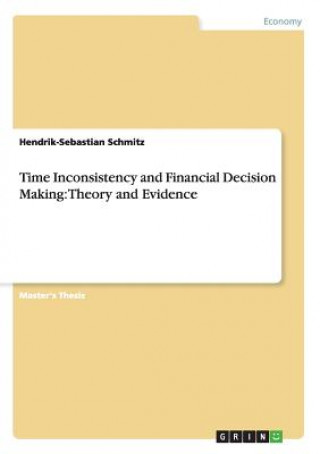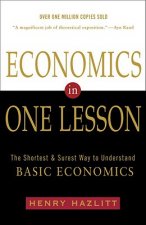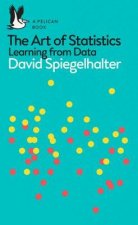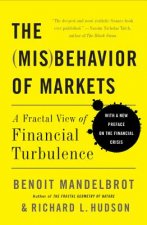
Kód: 05283783
Time Inconsistency and Financial Decision Making
Autor Hendrik-Sebastian Schmitz
Master's Thesis from the year 2012 in the subject Economics - Other, grade: 1,3, University of Münster (Institut für Siedlungs- und Wohnungswesen), language: English, abstract: Behavioral economics is a relatively young subdiscipl ... celý popis
- Jazyk:
 Angličtina
Angličtina - Väzba: Brožovaná
- Počet strán: 60
Nakladateľ: Grin Publishing, 2013
- Viac informácií o knihe

Mohlo by sa vám tiež páčiť
-

Condorcet's Paradox
140.34 € -

Dave Darrin's First Year at Annapolis
28.51 € -

Girl Scouts at Home, or, Rosanna's Beautiful Day
28.51 € -

Dorothy Dale's Queer Holidays
48.80 € -

Sound of the Hours
11.93 € -18 % -

Wiener Moderne
25.63 € -

WAS IST WAS Hörspiel: Schlangen & Echsen/ Wunderwelt Vögel, 1 Audio-CD, 1 Audio-CD
10.08 €
Darčekový poukaz: Radosť zaručená
- Darujte poukaz v ľubovoľnej hodnote, a my sa postaráme o zvyšok.
- Poukaz sa vzťahuje na všetky produkty v našej ponuke.
- Elektronický poukaz si vytlačíte z e-mailu a môžete ho ihneď darovať.
- Platnosť poukazu je 12 mesiacov od dátumu vystavenia.
Viac informácií o knihe Time Inconsistency and Financial Decision Making
Nákupom získate 144 bodov
 Anotácia knihy
Anotácia knihy
Master's Thesis from the year 2012 in the subject Economics - Other, grade: 1,3, University of Münster (Institut für Siedlungs- und Wohnungswesen), language: English, abstract: Behavioral economics is a relatively young subdiscipline of economics that has garnered a noticeable amount of attention especially over the last two decades. It seeks to utilize findings from other scientific fields, especially psychology, in order to enhance the plausibility of neo-classical (mainstream) economic models without replacing or abandoning them . The inclusion of psychology into economic thinking is nothing new, however. Instead, it can be traced back to the period of the classical economists of the 18th century. While lacking the rigorous formal approach of today s behavioral economists, the conception of the human nature and human decision making was surprisingly sophisticated at the time. For instance, time-inconsistent preferences, which are an important aspect of behavioral economics, have already been examined by David Hume and Adam Smith . Other phenomena, including loss aversion and overconfidence, have also been discussed by classical economists.This thesis has the following structure: Chapter 2 explains a general, quite powerful model of dynamically inconsistent preferences. Special emphasis is placed on real-life examples as well as welfare analysis, including political implications. As we move along, we will constantly compare our findings to the results we would obtain from the neoclassical paradigm. The next two chapters take a closer look at time inconsistencies in the realm of financial decision making. We will examine the behavior of individuals regarding credit card debt in chapter 3, which will require the introduction of another model that is more specifically tailored towards the credit card market. However, the foundations laid out in chapter 2 will be helpful in understanding this second model of inconsistency. Chapter 3 will also discuss recent legislation in credit card markets in the US. In chapter 4, we discuss retirement savings decisions, specifically in the context of the 401(k) retirement plan . After having introduced two models already that explain how people and companies act in certain situations, in the chapter we will discuss several behavioral phenomena that help us explain the motivation behind the decisions of individuals. We will assess the costs and benefits of government interference into the market and the possible measures that might improve the market outcome. Chapter 5 concludes and discusses interesting questions that might be examined further in the future.
 Parametre knihy
Parametre knihy
Zaradenie knihy Knihy po anglicky Economics, finance, business & management Economics
58.58 €
- Celý názov: Time Inconsistency and Financial Decision Making
- Podnázov: Theory and Evidence
- Autor: Hendrik-Sebastian Schmitz
- Jazyk:
 Angličtina
Angličtina - Väzba: Brožovaná
- Počet strán: 60
- EAN: 9783656385622
- ISBN: 3656385629
- ID: 05283783
- Nakladateľ: Grin Publishing
- Hmotnosť: 91 g
- Rozmery: 210 × 148 × 4 mm
- Dátum vydania: 13. March 2013
Obľúbené z iného súdka
-

Principles for Dealing with the Changing World Order
24.29 € -12 % -

Microeconomics and Behaviour, 3e
72.48 € -1 % -

History of Economics
15.54 € -28 % -

Why Nations Fail
11.21 € -14 % -

Team Topologies
23.88 € -13 % -

Misbehaving - The Making of Behavioral Economics
10.60 € -12 % -

Economics In One Lesson
14.71 € -28 % -

Start-Up Nation
9.05 € -25 % -

Freakonomics
8.12 € -20 % -

Essential Mathematics for Economic Analysis
73.20 € -1 % -

Rational Optimist
13.68 € -

Art of Statistics
10.90 € -25 % -

Liar's Poker
13.68 € -

Irrational Exuberance
20.48 € -9 % -

The Invisible Hand
7.51 € -27 % -

How I Made One Million Dollars Last Year Trading Commodities
39.12 € -23 % -

(Mis)Behaviour of Markets
13.58 € -28 % -

Breakthrough Copywriter
17.08 € -1 % -

Leading at a Higher Level
31.29 € -9 % -

Cartoon Introduction to Economics
16.67 € -22 % -

Business Model Navigator, The
26.66 € -15 % -

Human Action
38.09 € -

Fed Up
25.63 € -18 % -

Ludwig von Mises
21.30 € -

J R
23.36 € -20 % -

Radical Uncertainty - Decision-Making Beyond the Numbers
16.26 € -16 % -

Speak Up
17.80 € -18 % -

Pyramid Principle, The
51.27 € -

Predictably Irrational
14.92 € -19 % -

Price of Inequality
9.77 € -19 % -

Economic Facts and Fallacies
16.67 € -22 % -

A-Level Economics: Year 1 & 2 Complete Revision & Practice (with Online Edition)
26.87 € -15 % -

Scrum - A Pocket Guide - 3rd edition
22.75 € -5 % -

Debt, 10th Anniversary Edition
25.73 € -29 % -

Economics 101
13.58 € -28 % -

Misbehavior of Markets
22.64 € -

Econometric Analysis, Global Edition
86.59 € -

Hypomanic Edge
20.07 € -17 % -

ITIL4 A POCKET GUIDE
24.08 € -

Decision Book
14.30 € -26 % -

Principles of Economics
15.54 € -15 % -

45 Second Presentation That Will Change Your Life
9.26 € -25 % -

Economics of the Public Sector
79.79 € -

Discovery, Capitalism & Distributive Justice
19.86 € -7 % -

Economics: The User's Guide
13.58 € -28 % -

Freakonomics
6.07 € -30 % -

Think Like a Freak
9.77 € -25 % -

Phishing for Phools
16.36 € -15 % -

Rise of Carry: The Dangerous Consequences of Volatility Suppression and the New Financial Order of Decaying Growth and Recurring Crisis
24.50 € -27 %
Osobný odber Bratislava a 2642 dalších
Copyright ©2008-24 najlacnejsie-knihy.sk Všetky práva vyhradenéSúkromieCookies



 21 miliónov titulov
21 miliónov titulov Vrátenie do mesiaca
Vrátenie do mesiaca 02/210 210 99 (8-15.30h)
02/210 210 99 (8-15.30h)